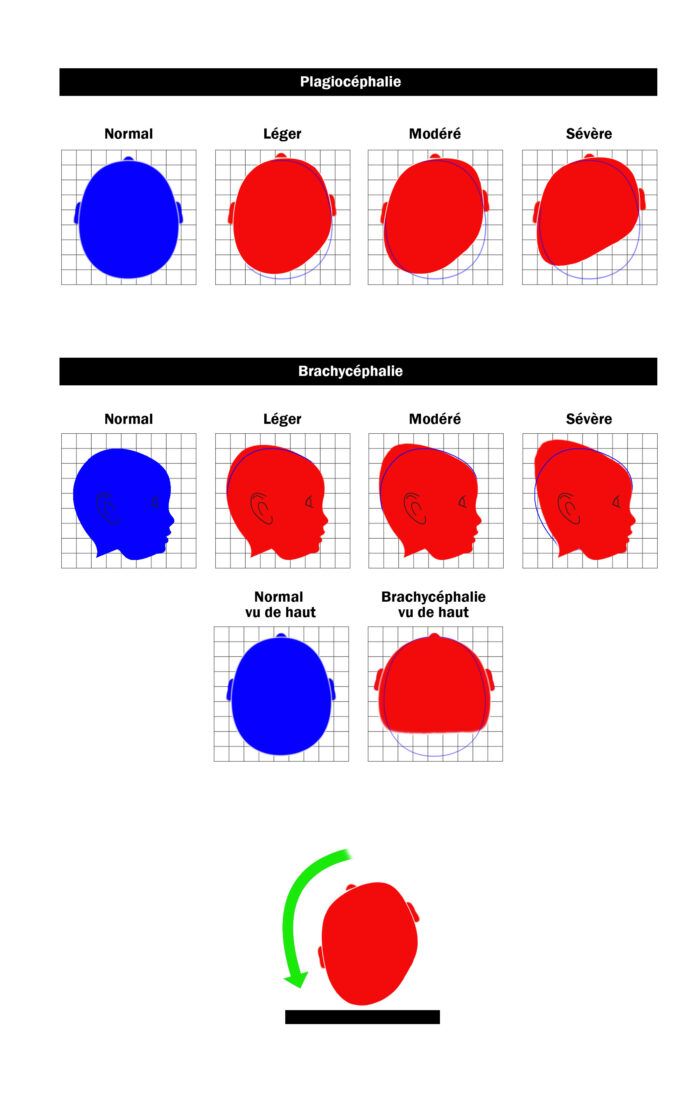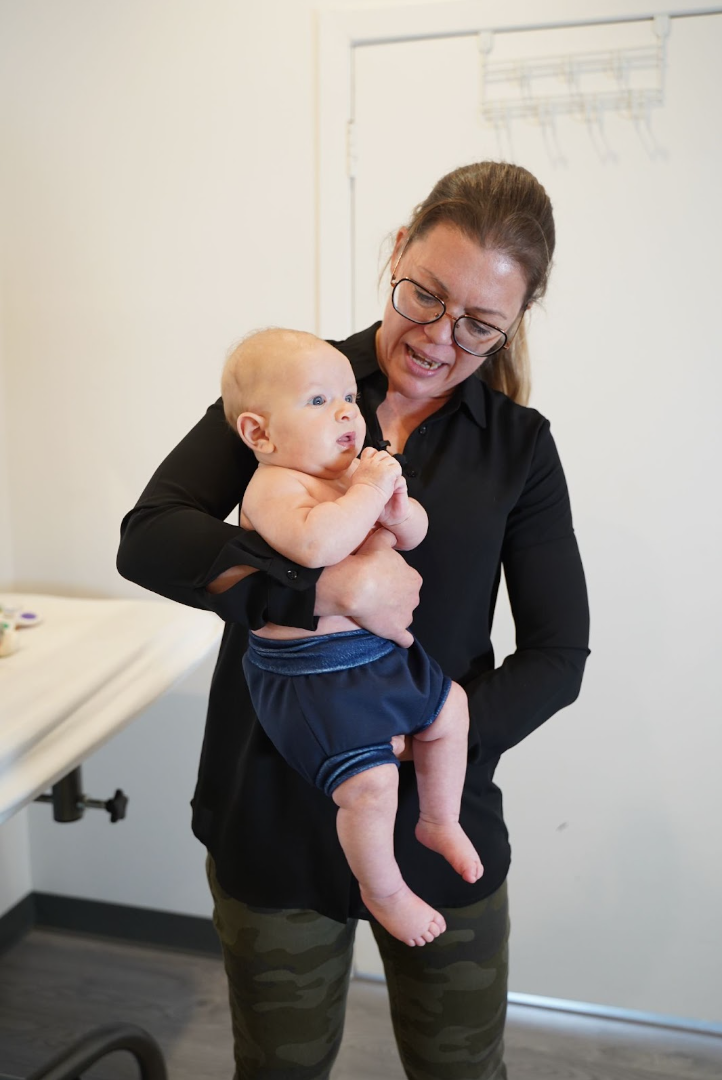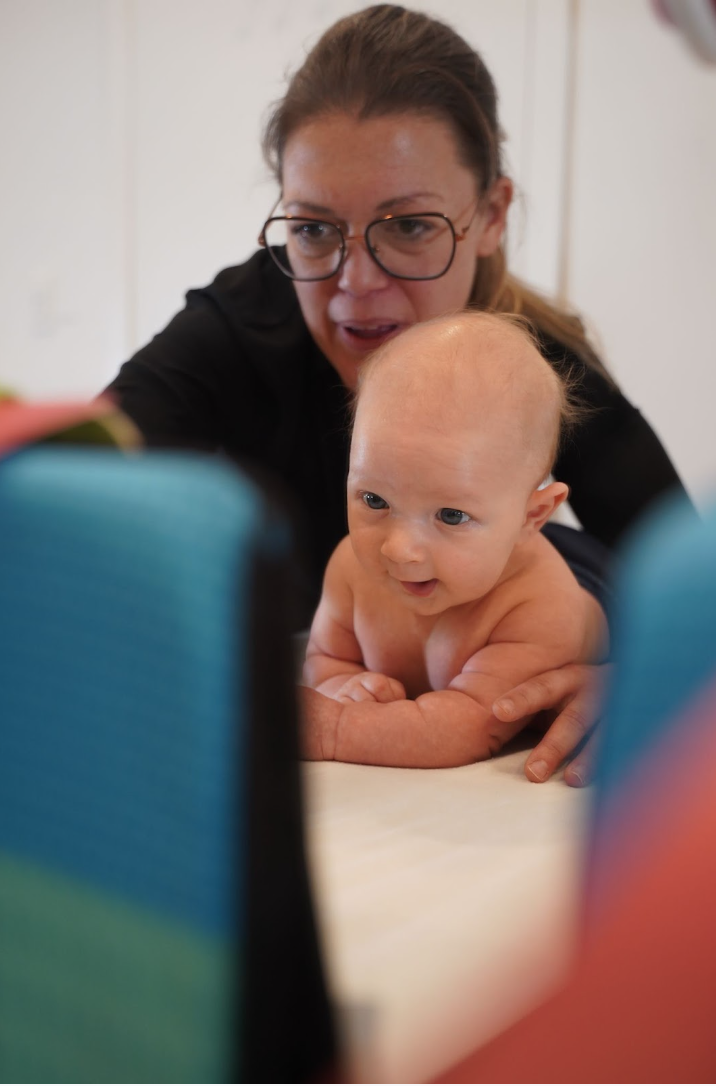Plagiocephaly and torticollis are very common postural atypia in toddlers. However, they can be prevented by identifying them and incorporating a few exercises into your child’s routine.
What is torticollis? How does it manifest itself?
Torticollis is a posture of the head and body that occurs when a baby’s head is constantly tilted to one side and turned to the opposite side. It can also be observed when the baby’s body tilts to the same side of the head.
What is plagiocephaly?

Source Image : CHU Ste Justine – Département de physiothérapie
Plagiocephaly is a deformation of the skull. The skull flattens due to prolonged asymmetrical weight-bearing.
There are also other signs of plagiocephaly and torticollis. An asymmetrical forehead (more rounded on one side than the other) or a flattened cheek on the side of head rotation are good indicators.
Here are the best tips and exercises to reduce the risk of torticollis and plagiocephaly, according to our pediatric physiotherapist.
1- Sleep on your back, as per Canadian paediatric standards.
2- To avoid torticollis, it’s important to work on your child’s neck muscles and help him or her master straightening the head. To do this, make sure baby’s head is centered and not tilted to one side. Always present toys lower than the level of your baby’s nose, to help your baby’s head sit upright.
Don’t panic! Children between 0 and 3 months of age cannot keep their heads centered on their own. They can turn their heads, but you need to make sure they can turn in both directions without tilting. Around 3 months, the child should have acquired this motor ability and be able to hold his head in the center.
3- There’s also an exercise to encourage head alignment: help your child bring his feet and hands to the center and stretch the trunk extensors. Position your child in the ball position to promote good head alignment.

4- On your back, head and hands in the middle, rotate your head on both sides using a bright or contrasting toy. Remember to place the source of stimulation lower than the eyes.
5- Holding your child in your arms can also help avoid head pressure. This promotes head and trunk control in newborns. The way you carry your child can help reduce torticollis/plagiocephaly. Make sure you put the baby’s head on your left arm as well as your right. You can also hold the child in a sitting position, alternating between the two sides and providing the necessary support for the trunk and head.

6- Variations in position are your best allies in preventing prolonged resting in the same place. Place your baby in a lateral decubitus position, on both sides, to play several times a day. It’s also advisable to put your child on his tummy for at least 45 minutes a day, and to separate periods of tummy time from periods of wakefulness. On the tummy, baby’s head should be in the center, and he should be able to turn his head to either side.

Our physiotherapist Josie Pilon can help you ensure your child’s motor development through personalized advice and exercises. Make an appointment with her if your child is at risk of torticollis, plagiocephaly or simply for preventive follow-up.
To book an appointment for pediatric physiotherapy, click here.

